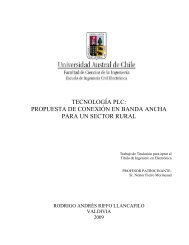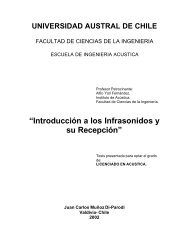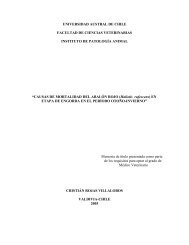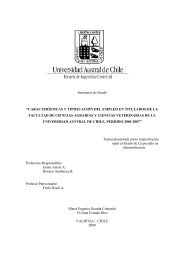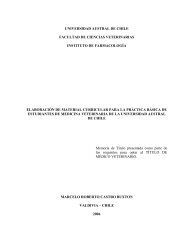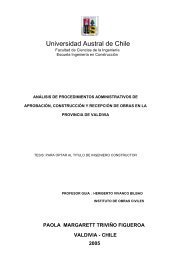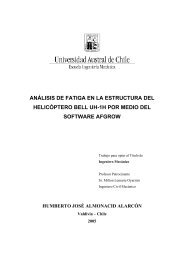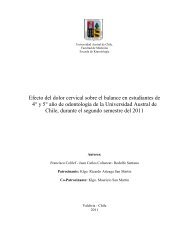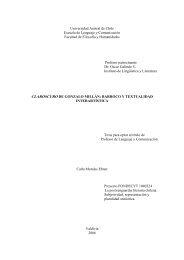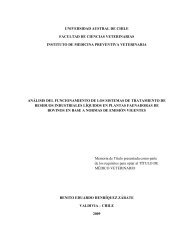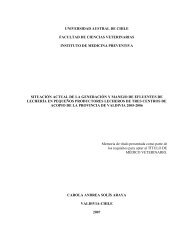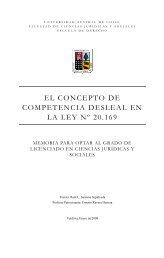Diversidad y control biológico de insectos - CyberTesis UACh ...
Diversidad y control biológico de insectos - CyberTesis UACh ...
Diversidad y control biológico de insectos - CyberTesis UACh ...
You also want an ePaper? Increase the reach of your titles
YUMPU automatically turns print PDFs into web optimized ePapers that Google loves.
Discussion.<br />
In our opinion, the adopted combination of techniques (Althoff and Pellmyr, 2002), is well<br />
suited to <strong>de</strong>al with topics such as whose studied in this research. Some populations are far<br />
apart (even thousands of kilometers) enough to allow hypothetical vicariant events to occur.<br />
However, when the B fragment phylogeny was overlain on the current geographic<br />
distribution of the isolates, no clear pattern was observed. On the other hand, the AMOVA<br />
analysis do <strong>de</strong>tect a small but significant population structuring, which could be resulted<br />
from more recent events, including human-mediated dispersal of the fungus through<br />
movement of crop plants and soil associated to them.<br />
The <strong>de</strong>mographic analyses proved to be complementary to the phylogenetic approach. As<br />
noted by Althoff and Pellmyr (2002), when the phylogenetic approach reveals a geographic<br />
structure, <strong>de</strong>mographic approach generally agrees. But when the phylogenetic approach<br />
fails to <strong>de</strong>tect such a structure, especially if recent <strong>de</strong>mographic changes has occurred, then<br />
the <strong>de</strong>mographic approaches are useful in that temporal scale. In this particular fungal<br />
population, it seems to be the case and reinforces the use of a combined approach<br />
(Bernatchez, 2001; Althoff and Pellmyr, 2002).<br />
We expected a clear differentiation between Eastern Island and continental Chile, based in<br />
the brief period in which the island has been influenced by the continent (Eastern Island<br />
was anexed to Chile at 1888). The division was clear when AMOVA and pairwise<br />
comparisons were used, but the phylogenetic signal for this division was weak. Eight<br />
Eastern Island’s isolates were grouped closely, but other six isolates were sparsed in a large<br />
cluster including isolates from all remaining populations.<br />
Early studies conducted on B. bassiana did not agree on the putative genetic relatedness<br />
and geographic origin. While some authors reported that they are correlated (Wang et al.,<br />
2003; Yang et al., 2005), others did not support this conclusion (Aquino <strong>de</strong> Muro et al.,<br />
2003; Aquino <strong>de</strong> Muro et al., 2005; Berretta et al., 1998; Coates et al., 2002). The studies<br />
differ largely on sample size, molecular methods and statistical analysis, being hard to<br />
properly compare each other. Others authors have suggested that genetic relatedness is<br />
27



